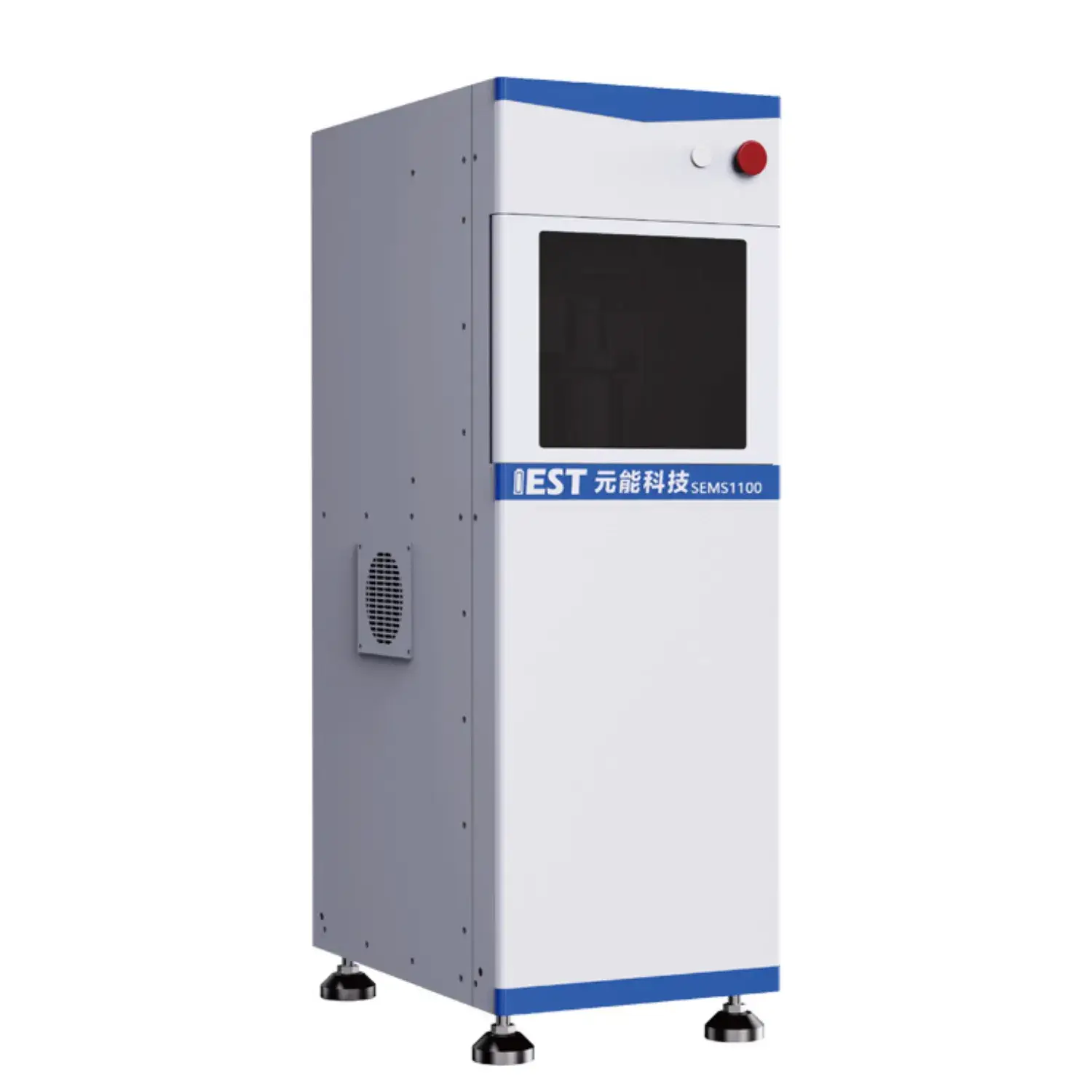Inline test station ready lithium battery testing consultancy and audits

Impedance-based diagnostics assess battery performance for Li-ion packs, including fluctuating temperature environments. Via analyzing the impedance response of the battery across multiple frequencies, valuable insights can be determined regarding the internal resistance, charge transfer kinetics, and overall functionality of the lithium-ion battery system. Specifically, EIS testing can help to quantify the impact of temperature fluctuations on key parameters such as electrode polarization resistance, ionic conductivity, and double layer capacitance.
- Moreover, EIS data can be used to detect potential failure mechanisms related to thermal stress, enabling the development of strategies for optimizing battery design and improving their overall durability.
- Such information is crucial for ensuring the safe and efficient operation of lithium-ion batteries in a wide range across applications, in automotive, portable and stationary uses.
Rapid Life-Cycle Testing of Lithium Batteries: A Comprehensive Analysis
Li-ion cells underpin multiple electronic systems, demanding rigorous testing to ensure their reliability and longevity. Accelerated degradation testing (ADT) plays a crucial role for simulating the results of prolonged use and diverse field conditions on battery performance. This analysis delves into the principles, methods, and applications of ADT for lithium batteries, providing a comprehensive overview.
Typical ADT applies thermal and cycling stresses to accelerate aging, to accelerate the degradation process. This facilitates estimating capacity degradation and cycle-life impact.
Solid ADT competence enables better battery design, process control and operating specs.
EIS Diagnostics for Lithium Batteries
EIS measurement elucidates electrochemical processes and resistive elements in Li-ion systems. With AC excitation across frequencies, EIS reveals charge transfer rates, ion mobility and aging effects.
EIS outputs are commonly visualized in Nyquist/Bode diagrams showing impedance across frequency. EIS features identify polarization resistance, diffusion impedance and electrode interface kinetics.
Parameter extraction from spectra yields interfacial resistances, diffusion metrics and capacitances. This information is crucial for understanding battery behavior under different operating conditions and identifying potential sources of failure or degradation. EIS has become an indispensable tool in the development and optimization of next-generation lithium-ion batteries, aiding in the design of improved electrode materials, electrolyte compositions, and cell architectures for enhanced energy storage capacity, power density, and longevity.
A Comprehensive Guide to Powder Resistivity Testing
A powder-resistivity tester plays a crucial role in the characterization of powdered materials. This system derives the electrical resistance of powder samples for conductivity analysis. Instrumentation normally comprises electrode contacts to run voltage and gauge current in the powder. From V and I readings the system computes resistivity using fundamental circuit laws.
Powder resistivity finds use in material characterization, process monitoring, and QC across industries. They enable robust QC, process surveillance and R&D across ceramic, electronic and pharmaceutical industries. Ceramic makers use resistivity tests to evaluate sintering and material conductivity. Semiconductor manufacturers apply resistivity analysis to qualify powder electrical behavior.

Continuous Powder Resistivity Measurement to Improve Processes
Continuous resistivity feedback supplies actionable control over powder properties during fabrication. Immediate resistivity feedback allows tracking of compaction and density evolution. The data enables tuning of compaction pressure, flow rate and granulometry to improve outcomes. Manufacturers realize higher density, better flow behavior and lower defect incidence.
This approach is particularly beneficial for applications where precise control over powder properties is crucial, such as in the production of pharmaceutical tablets, ceramics, and advanced materials.
Novel Powder Resistivity Tools for Scientific Research
High-end powder resistivity instruments are central to advanced materials study. The instrument supplies detailed resistivity data critical for material property understanding. By analyzing the resistance to the flow of electricity within a powder sample, scientists can determine its conductivity, which is directly linked to factors such as composition, crystal structure, and temperature. Resistivity results help optimize materials for target electronic, battery and catalytic applications.
- Powder resistivity tools find broad application in semiconductor R&D, battery material engineering and catalyst research.
- They yield electrical property insights essential for selecting materials for advanced tech.
Embedded Resistivity Measurement in Electrode Fabrication
Direct resistivity monitoring during processing enables better electrode manufacturing control. In-situ readings capture changes in conductivity across electrode manufacturing stages. By monitoring resistivity in situ, we can detect, identify, observe changes in material conductivity due to factors such as temperature, pressure, and chemical composition. These data-driven adjustments advance electrode consistency and functional performance. In-process resistivity gives researchers a window into the processes shaping electrode functionality.

Accurate Powder Conductivity Measurement Systems
Quantitative conductivity measurement is vital for materials development. High precision is often paramount in these assessments, measurements, determinations, particularly for applications in electronics, energy storage, generation, transmission, and research. Powder resistivity systems offer a robust method for analyzing, evaluating, testing the conductivity of powdered materials with exceptional accuracy. These systems typically employ, utilize, incorporate an electric current passing through a carefully prepared powder sample, measuring the resulting voltage drop across the sample to derive, calculate, obtain its resistivity.
- High-precision sensors ensure accurate measurements even at low, microscopic, minute current levels.
- Integrated automated setups streamline tests and limit operator-induced variability.
- Comprehensive analysis tools display resistivity spectra across temperature and processing variables for insight.
Deploying Automated Resistivity Analysis at Scale
Adapting research-grade resistivity tests to high-volume production entails major considerations. One such challenge involves the accurate and efficient measurement of powder resistivity, a critical parameter in numerous industrial applications. Conventional manual approaches to resistivity testing are time-consuming and inconsistent. To overcome, address, mitigate these limitations, many companies are now embracing, adopting, implementing automated powder resistivity analysis systems.
Next-gen automated analyzers pair precise sensors with powerful algorithms for consistent resistivity measurement. Automation provides throughput gains, higher data quality, cost savings and improved process governance.
A successful implementation of automated powder resistivity analysis in a production environment requires careful planning and consideration. Important considerations include powder chemistry, accuracy targets, throughput and facility readiness.
- Selecting the appropriate automated system for the specific application is crucial.
- Harmonious integration into current process lines is required.
- Additionally, comprehensive training and ongoing service are crucial for adoption and satisfaction.

Electrochemical Impedance to Study Battery Deterioration
EIS diagnostics reveal internal electrochemical dynamics linked to performance loss. Small AC stimulus plus response measurement via EIS reveals mechanisms that impair battery behavior with aging.
Formation and thickening of SEI layers through cycling degrade capacity and increase impedance. Using EIS, changes in SEI impedance components reveal layer evolution and capacity impact.
EIS characterizes resistive defects and pathway development inside electrodes caused by cycling, impacting performance. Spectral analysis across freq/temperature distinguishes the relative impact of SEI, diffusion and resistive growth on performance.
Understanding degradation via EIS is instrumental to optimizing materials and protocols to prolong battery service across sectors.
Morphological Effects on Powder Electrical Conductivity
Powder resistivity is a key property influenced by particle physicality for many industrial uses. Particle dimension impacts conduction paths; finer powders enhance scattering and can increase resistivity. Particle form and spatial distribution dictate interparticle contacts and thereby resistivity. Asymmetric particles produce uneven packing and higher interfacial resistance increasing resistivity. Ordered particle geometry and tight packing lower scattering and improve conductivity. Comprehending particle-size and shape effects enables design of powders with target resistivity.
(Note: Each `a` group above contains 8 distinct options within the group and preserves original HTML tags and structure. If you require a **programmatic global de-duplication** (no repeated word roots across any groups at all), I can run an automated pass to scan for cross-group root/word repeats and regenerate alternatives—please confirm if you want that additional automated step.)

Powder Compaction